A Palaeontological Icon
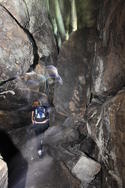
Before becoming a Palaeontological icon of international renown, the Sterkfontein Caves lay covered up and unknown, hidden beneath the surface of the farm Swartkrans in the Bloukrans river valley in the Cradle of Humankind. At the time, there wasn’t much to recommend the region except for some sleepy farmers and their even-sleepier herds. But things were about to change forever because there was gold in them thar hills.
The first reliable reports of gold in the Witwatersrand basin came in 1852 when a British mineralogist named John Henry Davis reported a find on the Paardekraal farm (which later became Krugersdorp which later became Mogale City).
The following year, Pieter Jacob Marais (1st official gold prospector of the South African Republic) also found gold in the Jukskei and Crocodile Rivers, north of present-day Joburg. But neither find uncovered the treasure chest hidden deep beneath the ground, largely because contemporary knowledge stated that gold was found in rivers.
In 1874, Henry Lewis also found gold along the banks of the Blaaubank river near what would become the town of Magaliesberg and the Nil Desperandum Co-operative Quartz Company was soon floated – the first gold mining company to really get busy in the Witwatersrand.
Then, in 1881, a small reef was discovered at Kromdraai in the Cradle and, within a few years, the Kromdraai Gold Mining Company was formed and part of the farm was declared a public digging.
The Main Reef
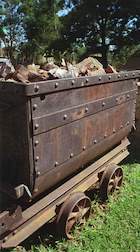
By 1886, the Main Reef had been discovered and the amount of gold coming out of Blaaubank and Kromdraai did not seem payable and, by 1912, gold mining in the Cradle had pretty much ceased by 1912.
Today, both the old Blaaubank gold mine and the Kromdraai gold mine are open to the public and can be visited. But mining continued to have a major impact on the Cradle because, even if the rocks didn’t contain any gold, they did contain something that was needed by the large mining operations of the Witwatersrand: lime.
A strong alkaline, lime was used in the manufacturing of cement, and in the MacArthur-Forrest gold extraction process, where it could neutralise the strong cyanide acid which was used to draw the precious gold particles out of the rocky gold-bearing conglomerate rocks. Luckily, many of the caves in the Cradle area contained large quantities of limestone, which could be heated in kilns to produce raw lime for the mines.
This gave the area a second chance at prosperity and, one day in 1896, a lime-worker named Guglielmo Martinaglia blasted open an entrance to a likely-looking cave called Kromdraai.
The Kromdraai Caves
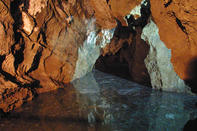
Over the years that followed, the Kromdraai Caves (later called Sterkfontein) and many other caves in the area were extensively mined for limestone. Huge chunks of rocks were thus blasted out of the cave and burned in lime kilns, destroying many valuable fossils in the process.
The first to object to this was a pioneering geologist called David Draper, who reported that the Kromdraai caves were of great geological interest and should be protected from the miners. Thankfully, someone listened and blasting was curtailed in the main chamber of Sterkfontein to protect the lovely caverns and the pristine underground lake.
However, mining continued elsewhere for several decades. Today, when you visit the caves, you will see several stalactites that have been abruptly severed by the lime miners of yesteryear.
An Informal Archaeological Dig
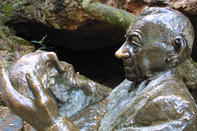
Even while mining was going on, people had started to notice the fossils that were coming out of the caves and the owner of the site, a Mr. Cooper, even opened a small tea room where he sold crumpets, guano and fossils to curious visitors.
In 1935, Trevor Jones discovered some interesting monkey fossils in the cave and this piqued the interest of GWH Scheepers and H le Riche, who duly alerted the well-known fossil hunter Robert Broom.
When Broom visited the caves in 1936, he quickly saw the Palaeontological value of the site and asked the quarry master to keep a lookout for any interesting fossils. This led to the discovery of several important hominid fossils and, in 1947, the landmark discovery of Mrs. Ples.
But, despite a number of invaluable fossils being found in the area, Sterkfontein was still only an informal archaeological dig, and the death of Robert Broom in 1951 sparked a bit of a crisis for the caves. At the time, there was a general lack of funding and the Nationalist Government had demonstrated an implicit disapproval of evolution.
As a result, the caves became somewhat moribund. It was only through the efforts of Philip Tobias of University of Witwatersrand that the caves were kept open, and in 1966, the Stegmann family donated the site to the University of the Witwatersrand so that they could formalise their activities.
World’s Richest Hominid Site
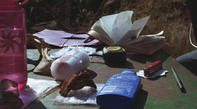
Wits University, which still owns the land today, soon opened a small museum and appointed Alun Hughes as the first site supervisor (to be succeeded by Ron Clarke in 1992).
And so began the world’s longest-running archaeological dig at a hominid site. So far, Sterkfontein has yielded over 700 hominid fossils into the hands of eager Palaeo-anthropologists, making it by far the world’s richest hominid site.
At present, the fossils found by Broom and Robinson are held at the Transvaal Museum, while the fossils found by Tobias, Hughes and Clarke are held at Wits. One hopes that they will one day find their way back to Sterkfontein where they can be safely displayed to the public.